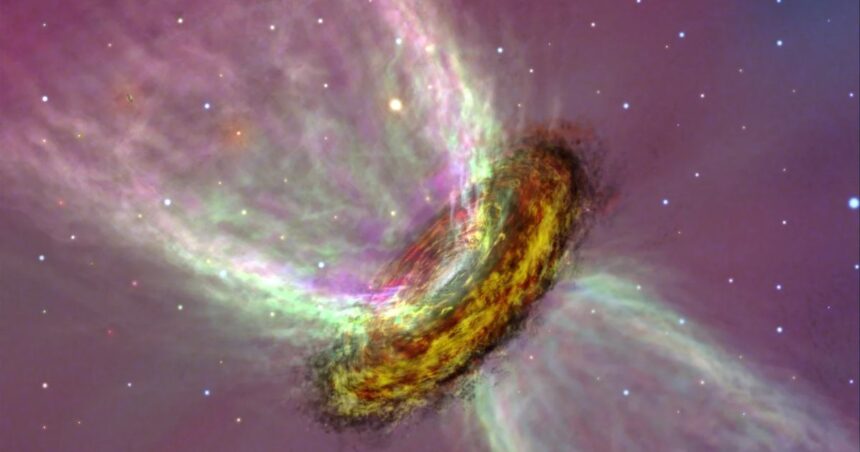The James Webb Space Telescope (JWST) has revealed new insights into how planetary systems form. This discovery is changing what we know about the birth of planets and stars.
The JWST has observed protoplanetary disks with unprecedented detail. These disks are made of gas and dust and are the birthplaces of planets. The telescope has captured images showing the layered, conical structure of disk winds – streams of gas blowing out into space. These winds play a crucial role in shaping the disks and, eventually, the planets that form within them.
One of the key findings is the process of accretion and angular momentum loss. Accretion is the gradual growth of planets as they gather material from the surrounding disk. Angular momentum loss is the process by which the disk loses its rotational energy, allowing material to fall onto the growing planet. These processes are essential for the formation of planets and stars.
The JWST has also detected water vapor in these disks. This is significant because water is a key ingredient for life. The presence of water vapor suggests that the conditions for life could exist in these young planetary systems. This finding supports the theory that icy pebbles from the outer regions of the disk drift inward, delivering both solids and water to the inner regions where planets form.
The observations made by the JWST are helping scientists understand the forces that shape protoplanetary disks. By studying these disks, researchers can gain insights into the processes that led to the formation of our own solar system. This knowledge is crucial for understanding the diversity of planetary systems in the universe.
The JWST’s findings are also shedding light on the early stages of star formation. Stars form from the collapse of gas and dust in these disks. The telescope has captured images showing the swirling “pancake” of hot gas and dust from which planets form. These images provide a glimpse into the chaotic environment where stars and planets are born.
The JWST‘s recent discoveries are providing valuable insights into the formation of planetary systems. By observing protoplanetary disks in unprecedented detail, the telescope is helping scientists understand the processes that shape these disks and the planets that form within them.
These findings are not only expanding our knowledge of the universe but also raising new questions about the conditions necessary for life. As the JWST continues to explore the cosmos, it will undoubtedly uncover more secrets about the birth of planets and stars.




